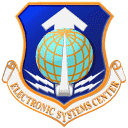


HANSCOM AIR FORCE BASE, Mass. (March 31, 1997) --- A capabilities demonstration in Florida to NATO officials was the midpoint of a busy month for the Hanscom-developed Joint Surveillance Target Attack Radar System.
Activities began March 7 with a 93rd Air Control Wing E-8C aircraft supporting the Navy’s Fleet Battle Experiment Alfa and the Marine Corps’ Hunter Warrior Advanced Warfighting Experiment, off the California coast. Radar images of vehicle movements at the Twenty-Nine Palms Marine Corps Air-Ground Combat Center were transmitted to the Navy’s U.S.S. Coronado command ship. The experiment was the first time Joint STARS images had been relayed to a ship at sea.
Five days later and 3,000 miles east, an E-8C was on display to NATO representatives during their three-day meeting in Florida. The NATO Alliance Ground Surveillance Steering Committee was treated to a full day of briefings, tours and lab presentations on the system.
The prime contractor, Northrop Grumman, used 25 leased vehicles traveling around the Melbourne, Fla., area to simulate ground targets in a real-time demonstration of the system’s capabilities. The 93rd ACW E-8C was in local orbit tracking the 25 "targets" and relaying the information to ground station modules operated by the 111th Military Intelligence Brigade. The ground picture was displayed on special screens in the company’s facility, where the NATO senior-ranking representatives were able to view the mock battlefield in action.
"It was a super job by the Air Force and the Army in demonstrating the operational military utility of Joint STARS," said Col. Larry G. Roseland, director of international programs in the joint program office here. "The senior-ranking NATO delegates were impressed with the flexibility and rapid reaction capability to respond to radar service requests from the users of these ground surveillance products."
In a letter to the Air Force and Army chiefs of staff, Principal Deputy Under Secretary of Defense for Acquisition and Technology R. Noel Longuemare said, "I was repeatedly told by the Europeans that this presentation revealed the operational utility of JSTARS to both ground and air forces in terms not previously explained."
Referring to the teams who made the demonstration possible, Longuemare said, "Their hard work has generated genuine new European interest in the JSTARS E-8C and GSM, and opened the door to its possible acceptance as NATO’s (Alliance Ground Surveillance) system.
The busy month was capped by the wing’s participation from March 23 to 29 in support of the U.S. Army’s Advanced Warfighting Experiment, designated Spring Thunder. The E-8C is staging out of Nellis AFB, Nev.
Wing officials said the exercise provides an opportunity to sharpen and improve the unit’s execution of its go-to-war plan while continuing on the road to Joint STARS initial operational capability.
The Joint Surveillance Target Attack Radar System is a long-range, air-to-ground surveillance and battle management system. The joint Army-Air Force program is capable of looking deep behind hostile borders to detect and track ground movements in both forward and rear areas. It has a range of more than 120 miles (200 KM).
The system is comprised of an airborne platform carrying a radar sensor with supporting subsystems and a ground station module that receives, in real time, the radar data processed in the aircraft.
For more information, contact Roy Heitman via email- [email protected] or call at ESC's Office of Public Affairs - (617) 377-4466